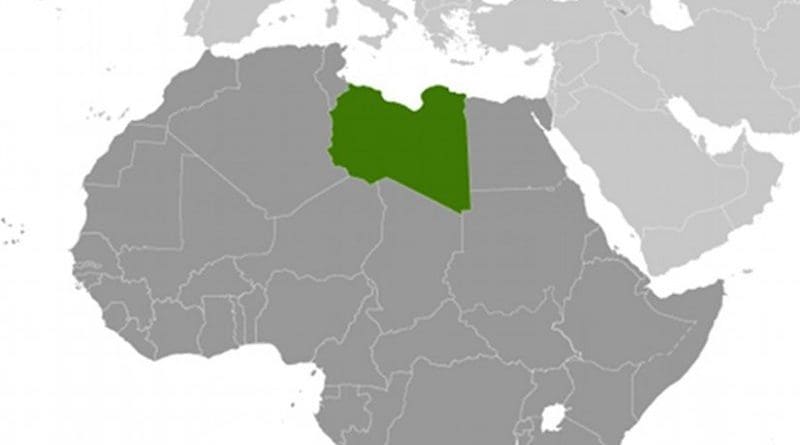Experts Describe Crime Scene Procedures Followed In Benghazi Terror Case – OpEd
By Jim Kouri
Three weeks after a shocking terrorist attack on the U.S. consulate in Benghazi, Libya, a team of FBI investigators finally had a chance to examine and process the crime scene and apparently followed proper procedures as much as possible, a Law Enforcement Examiner source said on Sunday.
While the FBI crime scene response team faced an obvious disadvantage, the forensic team still hoped to gather information, investigative aids, and evidence regarding the Islamists’ terror attack that burned-down the U.S. diplomatic compound and killed four Americans including the U.S. Ambassador to Libya, Chris Stevens.
One of the first responsibilities of investigators at any crime scene — domestic or foreign — is to prevent the destruction or contamination of evidence. Security measures must be initiated to prevent unauthorized persons from entering the crime scene or the immediate area. This includes members of the news media who may appear on the scene, according to former police detective and crime scene sketch artist Kenneth McMartin.
“Detectives and officers must not touch, move or pick up objects or disturb in any manner articles, marks or impressions that may have been left by the suspects. Others must be prevented from altering or contaminating the area, as well,” said McMartin.
Investigators should maintain this rigid security until all measurements have been made; the scene has been thoroughly searched for fingerprints, tool marks and the like; and all of the evidence has been collected, according to CSI experts.
Although various investigative guides can help a criminal investigator assess the value of evidence that may be found at a crime scene, the selection and collection of these items remains a question of individual judgement, McMartin claims.
“This personalized approach to the task of gathering evidence often leads to the common error of overlooking or disregarding the importance of the less obvious physical traces left by a suspect,” he added. “The investigator must develop a sensitivity to these things that may be out of place or do not appear to “belong” regardless of their size or appearance — mud on a rug, lipstick stains on a glass in a bachelor’s apartment, a cigarette stub found in the ashtray of a known pipe or cigar smoker, cloth fiber hooked on a torn window screen, etc.”
After the investigators have located an item considered pertinent to the case under investigation, it should not be disturbed until it is photographed, measurements are made, its position recorded on the crime scene sketch, its position recorded in the investigator’s notebook, and, if the case warrants, until the item has been processed for latent fingerprints, advises former police chief Dennis Pearson.
“Crime scene protection is fundamental to a criminal investigation and must be initiated by the first officer to arrive on the scene. Not only will adequate security measures prevent the destruction of physical evidence, but the hazard of creating false investigative leads is also reduced,” he warned.
It is difficult for a group of people to arrive at a common or accurate understanding of a particular event or scene when it is orally described to them, said forensic photographer and crime scene sketch artist James LaRosa.
The problem is further aggravated when the listeners are totally unfamiliar with the situation. Individual differences, past experiences, variances in temperament, intelligence level, personality makeup, social and cultural background cause the listeners to form personalized interpretations of what is being described. This is especially true in a criminal court case. These factors tend to color and often false interpretations of the facts, LaRosa noted.
How much easier and effective becomes the task of establishing a common and accurate understanding of a particular physical setting or an object when the courtroom testimony is accompanied by a photograph. It is this quality to present facts accurately and comprehensively that makes photography a valuable forensic tool. It allows the jury to obtain an accurate and lucid understanding of specific situations, said the police academy and college instructor.
In addition, photographic evidence may be stored and be readily available when it is needed. And finally, it provides the investigator with a visual record of the crime scene and objects related to the investigation, said LaRosa.
When photographs are viewed under favorable conditions in conjunction with the investigator’s notes, they may help a witness to recognize an overlooked object or condition that may furnish the key to proving the case.
Police officials and prosecutors all agree that the purpose of crime scene photography is to provide a photographic record of the facts and to allow viewers to obtain a better understanding of the crime itself: How it was committed, the setting, the manner in which particular evidence is related to the suspect or to the crime, and other aspects of the investigation.
Photographs are taken of all evidence or conditions the investigator is trained to discover during a routine crime scene search. If an outside technician is used to photograph the crime scene, the detective or investigating officer should then direct the picture taking.
As many photos as possible should be taken. The more pictures that are available, the greater the likelihood that a photo may be found to contain some significant information that may have been overlooked during the physical crime scene search. The availability of a number of pictures also allows the detectives and the prosecutor a wider choice of selection to better present a point at issue or having the necessary qualities to complement the testimony presented to the court. The photographs are generally introduced in conjunction with crime scene sketches or scaled drawings.

